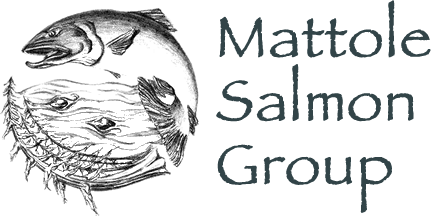Habitat Monitoring
Amy is still working on this, but here’s what I have so far. Text and photo in 2011 report.
The MSG’s habitat monitoring program has been focused on instream conditions that impact salmonid life. in order to determine where habitat restoration projects could be best directed, elucidate habitat factor limiting salmonid survival and abundance, and to provide pre- and post- project monitoring to evaluate efficacy of restoration projects we have completed.
Excessively high summertime water temperatures in the Mattole have been identified as a primary limiting factor in the survival of native anadromous fish stocks (Downie et al. 2002, Coates et al. 2002). Temperature is one of the most important environmental influences on salmonid biology.
The Mattole Salmon Group has conducted temperature monitoring throughout the Mattole River Watershed since 1995. From 1995-2011, temperature monitoring was conducted concurrently with juvenile dives. The goal of our long-term juvenile salmonid population and habitat monitoring program was to quantify distribution and relative abundance of juvenile salmonids in relation to available suitable habitat during non-winter months.
Low flows in the headwaters have been determined to be the primary factor limiting oversummer survival of juvenile Coho at their current distribution (MRRP 2011).
Current Monitoring Reports
2006-2011 Temperature Monitoring Reports are available under Juvenile Dives.
